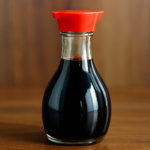
Judo originated in Japan in 1882 as a martial art based on the principles of maximum efficiency and mutual welfare and benefit. Jigoro Kano, the founder of Judo, wanted to create a form of physical and mental education that could be practiced by people of all ages and skill levels. Judo was designed to be a way for individuals to develop their physical abilities, mental fortitude, and moral character.
Jigoro Kano, the founder of Judo, began studying martial arts at a young age and went on to create Judo based on his experiences and teachings. Kano believed that Judo could be used not only as a means of self-defense, but also as a way to promote physical fitness, mental discipline, and personal development. He spent his life promoting Judo around the world and developing the techniques and principles that are still used today.
The word “judo” is derived from two Japanese characters, “ju” which means “gentle” and “do” which means “way”. Judo is often referred to as the “gentle way” because it emphasizes using an opponent’s strength against them rather than relying solely on one’s own strength. This makes Judo an effective form of self-defense for individuals of all sizes and strengths.
Judo is practiced in over 200 countries around the world and has become one of the most popular martial arts. Judo’s inclusion in the Olympic Games in 1964 helped to increase its popularity and visibility on a global scale. Today, Judo is practiced by millions of people worldwide and is used in various forms of military, law enforcement, and athletic training.
Judo was introduced as an Olympic sport in 1964 during the Tokyo Summer Olympics. Since then, Judo has been a part of every Summer Olympic Games. Judo’s inclusion in the Olympics has helped to raise the profile of the sport and attract new practitioners. Today, Judo is considered to be one of the most popular martial arts in the world and is practiced by people of all ages and skill levels.
Kayla Harrison became the first American to win an Olympic gold medal in Judo in 2012 during the London Summer Olympics. Harrison’s victory helped to increase interest in Judo in the United States and inspired a new generation of practitioners. Since then, the United States has become a major player in the world of Judo, with many talented athletes competing at the highest levels of the sport.
The highest rank in Judo is a 10th-degree black belt, which is known as a judan. Earning a judan is a rare accomplishment and requires a lifetime of dedication and training. In addition to the judan, there are other ranks in Judo that are denoted by colored belts. These belts are earned through a combination of skill, experience, and time spent training.
Judo throws are an essential part of the sport and there are over 67 different throws that are taught to Judo practitioners. Each throw requires a combination of balance, timing, and technique in order to be executed successfully. Some of the most popular Judo throws include the hip throw, shoulder throw, and foot sweep.
Judo is one of two martial arts that are included in the Paralympic Games. The other martial art is wheelchair fencing. Judo was introduced to the Paralympic Games in 1988 and has since become a popular and highly competitive sport for athletes with disabilities. Judo competitions for athletes with disabilities are divided into weight classes, just like in the Olympic Games.
Judo uniforms, called judogi, are made of heavy cotton and consist of a jacket, pants, and a belt. The jacket has a thick collar that is used for gripping and throwing an opponent. The pants are designed to be durable and comfortable for practicing Judo techniques. The belt is used to indicate a practitioner’s rank.
Judo competitions are divided into weight classes, with men’s and women’s weight classes ranging from 60 kg to over 100 kg. Competitors are paired with opponents of similar weight and skill level to ensure fair competition. Judo competitions can be held individually or as team events.
Judo is often used in self-defense training for military and law enforcement personnel. The techniques taught in Judo can be used to subdue an opponent without causing serious injury. Judo’s emphasis on controlling an opponent’s movements and using their strength against them make it an effective form of self-defense for individuals in dangerous situations.
Judo is often used as a form of physical therapy for individuals recovering from injuries or with disabilities. Judo’s emphasis on balance, coordination, and control make it an effective form of exercise for individuals with limited mobility. Judo training can also improve overall physical fitness, endurance, and flexibility.
Judo training includes both physical and mental components. Practitioners must develop physical strength, agility, and coordination, as well as mental fortitude, focus, and discipline. Judo training can help individuals develop self-confidence, leadership skills, and a strong work ethic.
Judo has a code of ethics called the “Judo Moral Code,” which emphasizes respect, courage, sincerity, honor, modesty, self-control, and friendship. The Judo Moral Code is an important part of Judo philosophy and is often taught alongside Judo techniques.
Judo tournaments are held at all levels of competition, from local to international. The most prestigious Judo tournament is the World Judo Championships, which are held annually and attract top Judo practitioners from around the world. Other major Judo tournaments include the European Judo Championships and the Asian Judo Championships.
Judo has been featured in many movies and TV shows over the years. Some of the most popular Judo-themed movies include “Red Sun,” “Best of the Best 2,” and “The Karate Kid, Part III.” Judo has also been featured in episodes of popular TV shows like “Hawaii Five-0” and “Walker, Texas Ranger.”
Judo is often taught to children as a way to promote physical fitness, discipline, and self-confidence. Judo training can help children develop important life skills like respect for others, self-control, and perseverance. Judo classes for children typically focus on basic techniques, safety, and fun activities to keep children engaged and motivated.
Judo practitioners often travel to train with other Judo clubs and practitioners. This allows practitioners to learn new techniques, gain experience, and make new friends in the Judo community. Many Judo clubs also organize training camps and seminars to help practitioners improve their skills and compete at a higher level.
Judo referees play an important role in ensuring fair and safe competition. Referees must be knowledgeable about Judo rules and techniques, and must make quick and accurate decisions during matches. Referees are responsible for awarding points and penalties, stopping matches when necessary, and ensuring the safety of the competitors.
Judo has many health benefits for practitioners. Regular Judo practice can improve cardiovascular health, increase flexibility and range of motion, and strengthen muscles and bones. Judo training also promotes mental health by reducing stress and anxiety, improving focus and concentration, and promoting self-discipline and self-confidence. Judo is a great way to stay healthy and active at any age.









